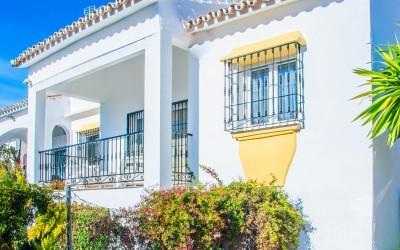
Spain is famous for its ferias, which take place across the country (particularly across Southern Spain) throughout the year. Because the feria involves hustle and bustle, and typically leads to large crowds gathering, they are going to look very different this year, thanks to the ongoing covid-19 restrictions. Still, that doesn’t mean that many of Spain’s most famous ferias won't be able to go ahead!
Here’s everything you need to know about what these Feria’s will look like this year, as well as understanding the fun and history of the traditional Spanish event:
Hosting the Feria de Abril in Seville
Seville is currently preparing to host a covid-safe and smaller version of one of the most famous fairs, the Feria de Abril. The fair will still include all of the traditional decorations, pennants and lights hung around the city. A smaller version of the traditional fun fair will also operate, aimed at children.
The event will run from Sunday April 18th to Saturday April 24th, and will be a smaller event than previous visitors might have come to expect. The main celebrations of the fair will be hested in a precinct that allows a maximum of 9,200 to gather, and unless eating or drinking all visitors will have to wear their face masks at all times (in line with current national guidelines). Whilst live music will still remain and integral part of the event, as it always has been, partygoers visiting the Muelle de Sal in the city to enjoy the music will have to remain seated whilst they’re being served.
Those visitors hoping to see the traditional flamenco dancers also won’t be disappointed, and women dressed in flamenco fashion will remain a core focus of the event. The local authorities are encouraging local women to dress to impress, whilst simultaneously boosting the local Seville fashion industry, which many local families rely on as their main source of income.
A Brief Overview of the Pre-Covid Feria
Whilst the ferias will look very different this year, if you’re wondering what the events were like pre-covid (and what they will be like when the world goes back to normal again) then here’s everything you need to know. Feria literally translates to mean fair, and much like a fair in any other country it involves rides, carnival-style games, music, junk food and drinks.
One of the advantages of living in Spain though, is the unique Spanish flavour that the ferias have. They are steeped in ancient tradition and the Spanish take them very seriously: you’ll noticed that all the shops surrounding the feria area are closed when the feria is taking place!
What to Wear to a Traditional Feria
There is no specific dress code to wear when attending a feria, but the dress is a very significant part of the event, particularly for women. You will immediately notice that many Spanish women wear traditional flamenco dress for the occasion, and these traje de flamenco can cost anywhere between 200-500€ to buy; if you can afford the investment, and want to truly experience the full feria experience then it is highly recommended that you follow the traditional dress code and dress to impress. If you’re keen to wear traje de flamenco, but don’t want to break the bank, why not scour local Humana (second hand stores) looking for a much more affordable version?
You’ll note that women who wear traje de flamenco also wear complementos. These are accessories such as earrings, bracelets and hair flowers that you’ll notice almost all Spanish women wearing. These can be picked up fairly inexpensively in any of the local bazaars. But don’t worry: none of this is obligatory! If you’d rather shop from your wardrobe then simply wear anything smart casual, and you’ll blend right in, ready to experience all the fun of the fair!
And for the gentlemen amongst you? Most simply wear button down shirts and jeans or trousers, making it much easier for men than women to find something appropriate to wear.
What to Eat and Drink at the Feria
Wondering where the best place to live in Spain is? The simple answer is anywhere you can enjoy typical feria food at least once a year! It’s a festival for the tastebuds, offering a wonderful array of traditional Spanish dishes. Try the fried fish, and thickly sliced jamon for the savoury portion of your meal, before moving on to the candy floss and churros. It may not be fancy, but this Spanish version of hot and fast junk food is designed to hit the right spot when you’re at the feria.
And when it’s time to quench your thirst? Rebujito is the typical alcoholic beverage that most people think of when they think of the feria: this is a dry white sherry called manzanilla that is mixed with fizzy lemonade. Rebujito is consumed in small glasses, but don’t let the size of the glass lead you to underestimate its potency! Beer is also commonplace the feria, and another reason why so many attendees wake up the next day with a hangover!
Are you thinking of moving to Spain? Perhaps you like the idea of submerging yourself into the traditional Spanish lifestyle and visiting all the local ferias in your new Spanish home? Whatever your dream, we can help. Why not get in touch with our team of local property experts today, to find out more about how we can help you.

 English
English Español
Español Deutsch
Deutsch Français
Français Svenska
Svenska Nederlands
Nederlands Italiano
Italiano Norsk
Norsk Русский
Русский

































